 Image search results - "yurihama" Image search results - "yurihama" |

Hawai Onsen hot spring is on the western shore of Lake Togo, a small brackish lake in Yurihama town in central Tottori Prefecture. A 15-min. bus ride from JR Kurayoshi Station at this bus stop.
|
|

Lake Togo is a small brackish lake connected to the Sea of Japan through a 2 km river. The perimeter is 12 km, and there's a walking path. There are no swimming beaches.It is a rare lake in Japan to have hot spring water gushing out of the center of the lake. The warm water creates a misty lake surface in winter.
|
|

The lake has Togo Onsen on the south shore, while the smaller Hawai Onsen is on the western shore. The lake has been in its current shape since at least the 13th century.
|
|

Directional sign seen from the bus to Hawai Onsen.
|
|

Hawai Onsen bus stop has this foot bath.
|
|

Hawai Onsen was built on reclaimed land jutting over the lake where the natural hot spring water gushed out of the lake bottom. This reclaimed land now has a number of inns where guests can enjoy the hot spring water. Since "Hawai" sounds the same as "Hawaii", it has associated itself with Hawaii by holding a hula festival in July.
|
|

Near Hawai Onsen is a nice lakeside park.
|
|
|
|
|

Lake Togo on an overcast, winter day.
|
|

Walking path around Lake Togo.
|
|

Manhole for Yurihama town, Tottori Prefecture. Famous for Hawai Onsen, Togo Onsen, and Lake Togo.
|
|

This lakefront space is used for the Hawaiian festival held in July.
|
|

At the tip of the Hawai Onsen's reclaimed land jutting into the lake is an inn named Sennentei, one of the major inns.
|
|

Hawai Onsen got its start in 1843 when local fishermen noticed warm spring water gushing out the lake bottom. The local Tottori lord gave them permission to utilize the hot spring water to make it easier to boil water, etc.
|
|

In 1866, a former samurai stuck bamboo pipes into the lake bottom and was able to extract the hot spring water into a barrel on a boat above. It was an open-air spring bath on the rocking boat. This continued for some years until they finally reclaimed some land offshore in 1886 and drew the hot spring water directly below and even built a ryokan inn above. This was the start of commercial operations as "Asozu Onsen" (浅津温泉).
|
|

Bridge to Sennentei. I decided to bathe in their outdoor bath. Most of the inns have baths for visitors costing up to ¥1,000. 千年亭
|
|

Sennentei had a nice New Year's decoration with kadomatsu and tanuki. 千年亭
|
|

Sennentei had a nice New Year's decoration with kadomatsu and tanuki. 千年亭
|
|

Inside, Sennentei had a nice flower arrangement.
|
|

Sennentei lobby.
|
|
|
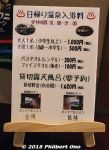
Bathing fees for non-staying guests. ¥1,000 for adults. Towels for rent too.
|
|
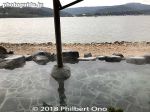
Men's outdoor bath at Sennentei. (Segregated) Hawai Onsen, Tottori. 千年亭
|
|
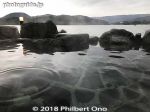
Men's outdoor bath at Sennentei. Nice view of the lake. Hawai Onsen, Tottori. 千年亭
|
|

Gift shop at Sennentei.
|
|

Gift shop at Sennentei sells Hawaiian chocolate.
|
|

Another large inn at Hawai Onsen is Bokoro. 望湖楼
|
|

This onsen had several name changes. In 1927, "Asozu Onsen" was renamed "Shin-Togo Onsen" (新東郷温泉). In 1978, it was renamed "Hawai Onsen" (羽合温泉). In 1998, they changed the Japanese name to はわい温泉 replacing the "hawai" kanji with hiragana.
|
|

Gift shop near the bus stop back to Kurayoshi Station.
|
|

Inside the Gift shop.
|
|

Autographed daruma.
|
|

Local souvenirs.
|
|

Yurihama poster
|
|

"Hawai" branch of this shop.
|
|

Map of the Hawai-cho area.
|
|
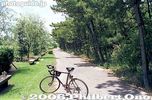
Hawai Rinkai Koen Beach Park in northern Lake Togo when I once cycled here. 羽合臨海公園
|
|
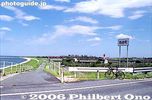
Border of Hawai-cho (now part of Yurihama city).
|
|
|
|
|
|





































